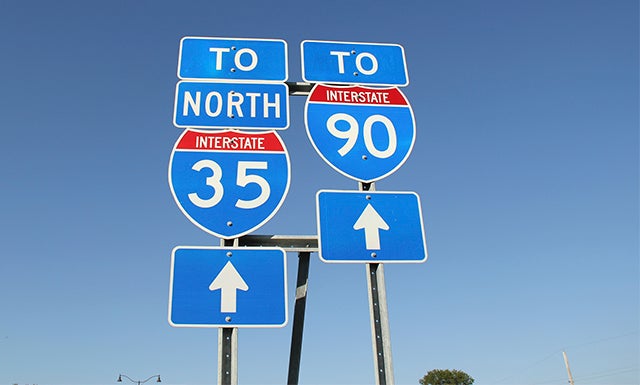Council hears feedback from MnDOT studies of I-90 bridges over I-35
Published 7:54 pm Tuesday, October 15, 2024
|
Getting your Trinity Audio player ready...
|
By Martha Jones Sichko
Minnesota Department of Transportation provided an update on replacing the two existing Interstate 90 bridges over Interstate 35 during the work session Monday of the Albert Lea City Council.
The need for a replacement stemmed from MnDOT’s annual inspection of the bridge, where aging and safety became issues.
MnDOT collected community feedback on the corridor and I-90 bridges through meetings, an online survey and pop-up events. Key concerns included merging onto I-35 and I-90, drifting snow and icy conditions near Goose Lake, rollover incidents and the need for signals and improved access.
Tory Thompson, project manager at MnDOT, and Peter Harff, MnDOT’s consultant from Alliant Engineering Inc., discussed the findings of the Interstate 35 and Interstate 90 corridor study to understand the situation and present solutions for replacing the bridges and making ramp improvements, with MnDOT planning the work for 2030-2031. Current funding projections only account for the two bridges on I-90 and ramp improvements.
The MnDOT team highlighted issues at I-35 and Main Street, including aging bridges, southbound traffic backups, frequent truck accidents, sideswipes, and snow and ice challenges. The crash rate was above the critical rate. The study analyzed Highway 65 and I-35, where the crash rate was also above the critical threshold.
Regarding replacing the I-90 bridges, Harff stated, “We assessed and considered alternatives revolving around public input, improved safety, reduced crashes and delays, and cost and environmental factors.” Harff noted that MnDOT doesn’t build cloverleaves anymore.
MnDOT proposed two alternatives: signal lights or two roundabouts at the I-35 and Main Street intersection.
MnDOT presented the council with a comparison of the two alternatives. In terms of safety and reduction of crash costs, the signal option would reduce them by 38 percent and the roundabout by 43 percent. Delays with signals will lessen by 36 seconds and 41.5 seconds for the roundabout. MnDOT is still determining cost and environmental factors and gathering public input.
Ian Riggs, city manager, stated, “Signals are less expensive than a roundabout.”
The council discussed challenges with roundabouts. Thompson replied, “We have designed them better.”
Harff outlined how roundabouts function better and expect reduced crashes, but not as much as signals. Although the reduction in crashes with injuries improves, producing a better safety record.
“Our goal is to look hard at putting in the roundabouts versus the signals,” said Steven Jahnke, public works director.
The city can expect crash reductions and improved truck access with both solutions. The costs for Albert Lea and MnDOT are still pending.
MnDOT’s next steps include identifying funding options and pursuing grants. They will hold a public information meeting at City Hall on Oct. 23 for residents to learn about updates. A recommendation will be made in November 2024, with preliminary design starting in winter 2025, funding secured in 2029, and construction beginning in 2030.
“What I heard tonight is reasonable,” said Albert Lea Mayor Rich Murray.






